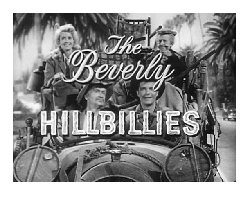- The different types of costumes available and what is hot for 2013.
 October is my favorite month. In my neck of the woods, the weather is not too cool and not too warm, it's just right. The football season is well underway and Major League Baseball finally concludes its season. There are lots of festivals and outings, all of which are topped off by Halloween with "ghoulies and ghosties," not to mention trick or treat.
October is my favorite month. In my neck of the woods, the weather is not too cool and not too warm, it's just right. The football season is well underway and Major League Baseball finally concludes its season. There are lots of festivals and outings, all of which are topped off by Halloween with "ghoulies and ghosties," not to mention trick or treat.
I've always enjoyed the various Halloween costumes I've seen over the years. Some are prepared with great imagination, others are simply banged out by machine and available at various discount outlets. It has been my observation there are four categories of costumes:
1. TRADITIONAL - these are costumes representing the ghoulish side of Halloween, such as witches, ghosts, Jack O' Lanterns, skeletons, pirates, Dracula, and the Frankenstein monster. Perhaps the best costume I have seen in this category was a friend dressed as the Wolf Man. He even went so far to glue dog hair on his head, chest, and hands. He also had some great artificial teeth with fangs. When he was done, he looked very much like the Wolf Man as portrayed by Lon Chaney, Jr. It was simply remarkable. I just wonder how long it took him to use mineral spirits to remove all of the hair afterwards.
Then of course there are the little girls dressed as princesses, and others dressed as clowns, maids and butlers, all of which represent the sedate side of Halloween.
2. TOPICAL - this involves some sort of pop culture reference. I suspect we will see a lot of Miley Cyrus lookalikes this year, but I shutter to think if they will be dancing like her. In the past, I've seen some great costumes to replicate people such as singer Dolly Parton, boxing promoter Don King (complete with his signature hair), and the various Presidents over the years, starting with Nixon. After the furor this summer, I'll be curious to see if there will be any President Obama masks. It will either be incredibly popular or nonexistent as the NAACP has probably snapped up all of his masks.
Perhaps the best costume in this category, that I have seen, was someone dressed as John DeLorean, the famed automotive engineer responsible for creating the DeLorean DMC-12 sports car, which was made popular in the 1985 film, "Back to the Future." As you might remember, DeLorean was arrested in 1982 for drug trafficking, a very high profile case. At a Halloween party later that year, we had a friend dress up as DeLorean, complete with business suit, loud tie, his signature gray hair, and little baggies filled with white cane sugar stuck on him and representing cocaine. He played the role perfectly and everybody loved it. It wasn't a complicated costume but it was the hit of the party.
That's just the point for costumes in this category, they need not be very elaborate, just something very timely that everyone has heard about. For example, a Michael Jackson impersonator may have been good a few years ago, but not today. Maybe there will be some George Zimmermans patrolling my neighborhood this year.
3. MOVIE/TV - this is perhaps the easiest category to find a costume, particularly kids who gravitate to comic book heroes now on the big screen, e.g., Spider Man, Iron Man, Thor, Captain America, Superman, Batman, etc. This year though, I expect to see some people dressed like Walter White from "Breaking Bad", or perhaps some more zombies from "The Walking Dead." I think we'll also see some "Duck Dynasty" characters this year.
Years ago, Groucho Marx was a favorite. I also had a friend who had an outstanding Indiana Jones outfit, the best I've seen, complete with whip. One of my favorites though was a friend dressed as Father Guido Sarducci of SNL fame, and dating a pregnant nun. However, I don't think too many people would recognize the character anymore. My wife and I dressed up as the SNL "Killer Bees" years ago and won the prize for best costume. The point is, SNL is still a good source for costume ideas.
4. AVANT GUARDE - this is my favorite category as you will see some rather nutty stuff dreamt up by people, with hand-made costumes and extensive makeup. I particularly enjoy those costumes where the person's head is misplaced. It's all rather creative, but I'm not sure how they go to the bathroom or have a drink. There are also the sexy and provocative outfits good for a laugh.
One of the best I've seen in this category was a friend who dressed as a legless beggar rolling around on a four wheel cart close to the ground. To this day, I still don't know how he managed to hide his legs.
2013
I searched the Internet to see what was planned for this season. At Purecostumes.com, I found a listing of the top masks, including:
1. Dark Harvest Ani-Motion Mask (a demented Jack O' Lantern)
2. In Stitches Ripper Mask (evil clown)
3. President G.W. Bush Mask
4. Tormented Soul Ani-Motion Mask (angry ghost)
5. Dungeon Dweller Ani-Motion Mask (Frankenstein monster)
6. President Obama Mask.
7. President Clinton Mask.
8. Bart Simpson Mask.
9. Homer Simpson Mask.
10. Muckmouth Ripper Mask (ghoulish).
2. In Stitches Ripper Mask (evil clown)
3. President G.W. Bush Mask
4. Tormented Soul Ani-Motion Mask (angry ghost)
5. Dungeon Dweller Ani-Motion Mask (Frankenstein monster)
6. President Obama Mask.
7. President Clinton Mask.
8. Bart Simpson Mask.
9. Homer Simpson Mask.
10. Muckmouth Ripper Mask (ghoulish).
Frankly, I was surprised President Bush is still more popular than Obama and Clinton. I was also surprised to see the Simpsons were still popular after all these years.
It's interesting what you see on All Hallows' Eve; some people go out to make a political statement, some to terrorize the neighborhood in their own small way, but most are out simply to have a good time and enjoy a few laughs. My personal favorite is to have a young child come to your door for his/her first trick or treat. The parents watch closely nearby as the child knocks on the door (as he cannot reach the doorbell). When you open the door, he modestly muffles a "Twick or tweet." His eyes sparkle as you offer candy; he is still amazed by the idea of getting something free. The parents admonish him to say, "Thank you," before scurrying down the sidewalk to the next house. The look on the child's face and their pristine costume is simply priceless.
I'm really not too sure who enjoys Halloween more, the adults or the kids.
Keep the Faith!
Note: All trademarks both marked and unmarked belong to their respective companies.
 Tim Bryce is a writer and the Managing Director of M&JB Investment Company (M&JB) of Palm Harbor, Florida and has over 30 years of experience in the management consulting field. He can be reached at timb001@phmainstreet.com
Tim Bryce is a writer and the Managing Director of M&JB Investment Company (M&JB) of Palm Harbor, Florida and has over 30 years of experience in the management consulting field. He can be reached at timb001@phmainstreet.com
For Tim's columns, see:
timbryce.com
Like the article? TELL A FRIEND.
Copyright © 2013 by Tim Bryce. All rights reserved.
NEXT UP: CHATTY CATHIES - Dealing with those who talk incessantly.
LAST TIME: ARE RESTAURANTS BEING BULLIED?
- Is government bureaucracy choking restaurants unnecessarily?
Listen to Tim on WJTN-AM (News Talk 1240) "The Town Square" with host John Siggins (Mon, Wed, Fri, 12:30-3:00pm Eastern), KGAB-AM 650 "The Morning Zone" with host Dave Chaffin (weekdays, 6:00-10:00am Mountain), and KIT-AM 1280 in Yakima, Washington
"The Morning News" with hosts Lance Tormey & Brian Teegarden (weekdays. 6:00-9:00am Pacific). Or tune-in to Tim's channel on YouTube.
 The restaurant business is a tough one, requiring skill, patience, and considerable fortitude. It's much more than just having a good recipe or talented chef, you have to have good people skills, and a keen attention to detail. If you do not, your tenure will be brief. My restaurant friends have told me about dozens of restaurants which have gone out of business in Pinellas County. According to LoopNet.com, there are 65 restaurants currently for sale in Pinellas County, a few with some very prominent names. Back in July, Spotos, a longtime fixture in Dunedin closed its doors claiming rising costs and the economy took its toll on them. This surprised me as I had visited them for years and thought they would endure a lot longer. Frankly, it looks like the owners became frustrated and burned out, as I suspect many other owners are becoming likewise.
The restaurant business is a tough one, requiring skill, patience, and considerable fortitude. It's much more than just having a good recipe or talented chef, you have to have good people skills, and a keen attention to detail. If you do not, your tenure will be brief. My restaurant friends have told me about dozens of restaurants which have gone out of business in Pinellas County. According to LoopNet.com, there are 65 restaurants currently for sale in Pinellas County, a few with some very prominent names. Back in July, Spotos, a longtime fixture in Dunedin closed its doors claiming rising costs and the economy took its toll on them. This surprised me as I had visited them for years and thought they would endure a lot longer. Frankly, it looks like the owners became frustrated and burned out, as I suspect many other owners are becoming likewise.
 The four day work week has been back in the news lately. I am hearing of a lot of companies promoting the concept, whereby an employee works four days in the office and one at home or wherever he/she desires. The theory is to offer workers the freedom to work from home as opposed to the office which is commonly viewed as a pressure cooker. I never did buy into this concept and see it more as an excuse for employees to screw off. The only time I might accept it is when an employee is sick, particularly with an infectious disease, and it would serve the office better for that person to stay at home and not infect the other workers. Then again, we might get too many people calling in sick, but I digress.
The four day work week has been back in the news lately. I am hearing of a lot of companies promoting the concept, whereby an employee works four days in the office and one at home or wherever he/she desires. The theory is to offer workers the freedom to work from home as opposed to the office which is commonly viewed as a pressure cooker. I never did buy into this concept and see it more as an excuse for employees to screw off. The only time I might accept it is when an employee is sick, particularly with an infectious disease, and it would serve the office better for that person to stay at home and not infect the other workers. Then again, we might get too many people calling in sick, but I digress.
 The Tampa Bay area was recently distinguished as
The Tampa Bay area was recently distinguished as  Every now and then when I write about the systems field I'm sure a lot of my general readers yawn. My thinking is, if I can educate the general public, they will be less likely to be duped by the programmers running corporate America today. As such, it is important for me to illustrate most of what goes on in the systems and software world is really not as complicated as people make it.
Every now and then when I write about the systems field I'm sure a lot of my general readers yawn. My thinking is, if I can educate the general public, they will be less likely to be duped by the programmers running corporate America today. As such, it is important for me to illustrate most of what goes on in the systems and software world is really not as complicated as people make it.
 I recently attended a management seminar in my neck of the woods. I don't want to mention any names here but the speaker represented a consortium of consultants who specialized in a variety of subjects, such as business process improvement, tax laws, planning, technical writing, etc. The person making the pitch specialized in "life coaching" which, as I gathered, offered the same type of advice a good parent, guidance counselor or mentor would. I judged the speaker to be in his mid-to-late 30's and was very preppy in dress. He tried the usual speaker stunts to stimulate the audience, such as saying, "How many of you has had this happen to you? Can I see a show of hands?" He also passed out prizes if you answered a question correctly, which made people look like trained seals being rewarded for tooting the horn and clapping. In addition to his histrionics, he was an entertaining speaker and used a good multimedia presentation to support his points. After awhile though, it became apparent there was little substance in his presentation, but you were supposed to go away feeling good about yourself, the consultant's service, and a possible business relationship.
I recently attended a management seminar in my neck of the woods. I don't want to mention any names here but the speaker represented a consortium of consultants who specialized in a variety of subjects, such as business process improvement, tax laws, planning, technical writing, etc. The person making the pitch specialized in "life coaching" which, as I gathered, offered the same type of advice a good parent, guidance counselor or mentor would. I judged the speaker to be in his mid-to-late 30's and was very preppy in dress. He tried the usual speaker stunts to stimulate the audience, such as saying, "How many of you has had this happen to you? Can I see a show of hands?" He also passed out prizes if you answered a question correctly, which made people look like trained seals being rewarded for tooting the horn and clapping. In addition to his histrionics, he was an entertaining speaker and used a good multimedia presentation to support his points. After awhile though, it became apparent there was little substance in his presentation, but you were supposed to go away feeling good about yourself, the consultant's service, and a possible business relationship.
 Whenever you think of the Middle East, two things come to mind: oil and violence. If there was no oil, the rest of the world probably would not care about the region and let the tribes destroy themselves. It's an area known as the birthplace of many religions, including Christianity, Islam, and Judaism, among many others. Ironically, all profess love, peace, and understanding, yet cannot wait to kill each other off.
Whenever you think of the Middle East, two things come to mind: oil and violence. If there was no oil, the rest of the world probably would not care about the region and let the tribes destroy themselves. It's an area known as the birthplace of many religions, including Christianity, Islam, and Judaism, among many others. Ironically, all profess love, peace, and understanding, yet cannot wait to kill each other off.
 From time to time, workers find themselves at odds with the boss, be it a supervisor, manager, director, or higher. Conversely, the boss may feel uncomfortable around his workers and no longer trusts their ability to successfully complete their work. Before either party jumps to conclusions and starts pointing fingers as to fault, it would be wise to try walking in the shoes of the other person. Workers typically do not know the pressures the boss is under, such as changing business conditions, making quota, or the need to deliver projects on-time and within budget. Senior management and customers can exert considerable pressure in this regards. Likewise, the boss should be cognizant of the pressures a worker can be under, such as conquering a technical problem, financial woes, sickness, problems at home, divorce, a death or crippling accident in the family, or possibly tension and division between employees in the work place. If we are going to ask workers to become sensitive to the problems of the boss, it is reasonable to assume the boss should be sensitive to the problems of the workers.
From time to time, workers find themselves at odds with the boss, be it a supervisor, manager, director, or higher. Conversely, the boss may feel uncomfortable around his workers and no longer trusts their ability to successfully complete their work. Before either party jumps to conclusions and starts pointing fingers as to fault, it would be wise to try walking in the shoes of the other person. Workers typically do not know the pressures the boss is under, such as changing business conditions, making quota, or the need to deliver projects on-time and within budget. Senior management and customers can exert considerable pressure in this regards. Likewise, the boss should be cognizant of the pressures a worker can be under, such as conquering a technical problem, financial woes, sickness, problems at home, divorce, a death or crippling accident in the family, or possibly tension and division between employees in the work place. If we are going to ask workers to become sensitive to the problems of the boss, it is reasonable to assume the boss should be sensitive to the problems of the workers.
 A close friend is someone you feel comfortable with, someone who has proven to be trustworthy, and you treat like family, maybe better. There are no pretenses, just openess where you freely exchange ideas, humor, and personal thoughts. Because my family moved several times while I was growing up, I have had several close friends over the years and I recently started to enumerate them on paper. Interestingly, all of them had monosyllable names. For example, as I grew up I knew two "Toms", two "Johns", two "Richs", as well as a "Mark", "Steve," "Chris", "Rick," "Rob", "Frank", "Mike", and a few others. All had short simple names. In adulthood I also gravitated towards people with single syllable names for some reason.
A close friend is someone you feel comfortable with, someone who has proven to be trustworthy, and you treat like family, maybe better. There are no pretenses, just openess where you freely exchange ideas, humor, and personal thoughts. Because my family moved several times while I was growing up, I have had several close friends over the years and I recently started to enumerate them on paper. Interestingly, all of them had monosyllable names. For example, as I grew up I knew two "Toms", two "Johns", two "Richs", as well as a "Mark", "Steve," "Chris", "Rick," "Rob", "Frank", "Mike", and a few others. All had short simple names. In adulthood I also gravitated towards people with single syllable names for some reason.
 As most of us are aware, the City of Detroit declared bankruptcy in July, the largest municipality to do so thus far. This sent tremors through many state governments, particularly Michigan, who are wary of fragile government economies. The American public though doesn't seem to realize the magnitude of the problem yet, or perhaps they choose to simply ignore it (I suspect the latter). Nonetheless, according to
As most of us are aware, the City of Detroit declared bankruptcy in July, the largest municipality to do so thus far. This sent tremors through many state governments, particularly Michigan, who are wary of fragile government economies. The American public though doesn't seem to realize the magnitude of the problem yet, or perhaps they choose to simply ignore it (I suspect the latter). Nonetheless, according to  I think the expression "Task Master" has become passé in today's workplace but I'm not too sure what has replaced it, perhaps "Micromanager" or simply a "Pain in the Ass." Basically, it's referring to someone charged with performing a task through to completion and moves heaven and earth to get the job done. I've met a lot of tough Task Masters over the years, and I have found there are essentially two types: the megalomaniac, and the "poor slob" who has had an assignment dropped in his lap and realizes failure is not an option.
I think the expression "Task Master" has become passé in today's workplace but I'm not too sure what has replaced it, perhaps "Micromanager" or simply a "Pain in the Ass." Basically, it's referring to someone charged with performing a task through to completion and moves heaven and earth to get the job done. I've met a lot of tough Task Masters over the years, and I have found there are essentially two types: the megalomaniac, and the "poor slob" who has had an assignment dropped in his lap and realizes failure is not an option.
 We've all heard about "The Greatest Generation," "the Baby Boomers," and Generations X, Y, and Z. These are all labels used to describe and contrast the characteristics of the various age groups of people. I've used it myself in my writings to describe the behavior of different classes of workers, but recently I had someone in an Internet Discussion group tell me there was a easier way of differentiating people, namely Analog versus Digital. I found the description to be simple, yet profound, in terms of differentiating people. To illustrate:
We've all heard about "The Greatest Generation," "the Baby Boomers," and Generations X, Y, and Z. These are all labels used to describe and contrast the characteristics of the various age groups of people. I've used it myself in my writings to describe the behavior of different classes of workers, but recently I had someone in an Internet Discussion group tell me there was a easier way of differentiating people, namely Analog versus Digital. I found the description to be simple, yet profound, in terms of differentiating people. To illustrate:
 As Pinellas residents, we are fairly cognizant of the importance of managing water, be it from the Gulf, our aquifer, reclaimed, or from the skies. Storm water is of particular concern to us as we often experience torrential downpours or the occasional hurricane. Over the years we have developed rules and regulations to control flooding, such as the need for retention ponds and finding ways to dispose of excess water to the Gulf. This has greatly reduced flash flooding in Pinellas, but not all of our county was developed according to the rules, particularly older sections where flash flooding is still a serious threat to many communities.
As Pinellas residents, we are fairly cognizant of the importance of managing water, be it from the Gulf, our aquifer, reclaimed, or from the skies. Storm water is of particular concern to us as we often experience torrential downpours or the occasional hurricane. Over the years we have developed rules and regulations to control flooding, such as the need for retention ponds and finding ways to dispose of excess water to the Gulf. This has greatly reduced flash flooding in Pinellas, but not all of our county was developed according to the rules, particularly older sections where flash flooding is still a serious threat to many communities.